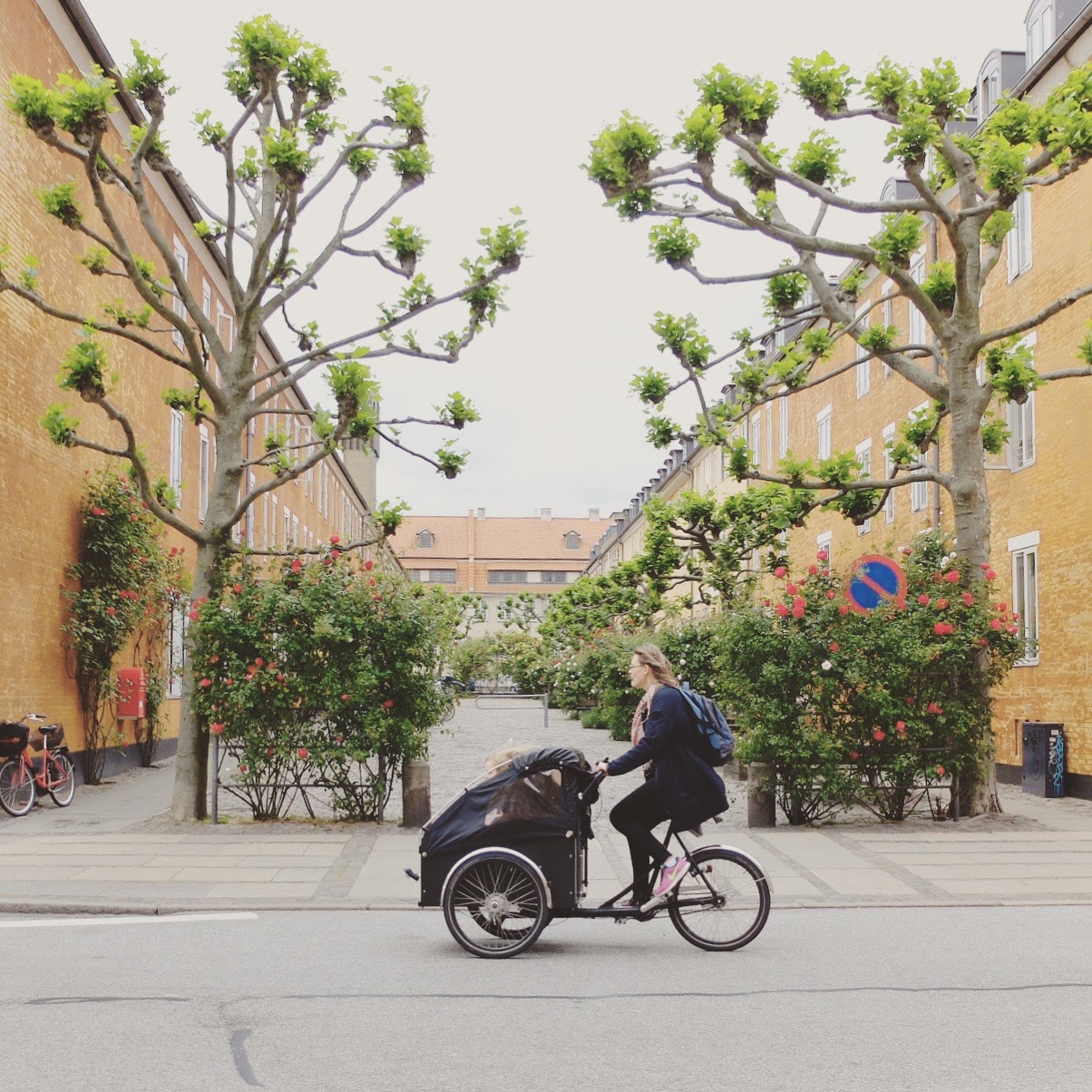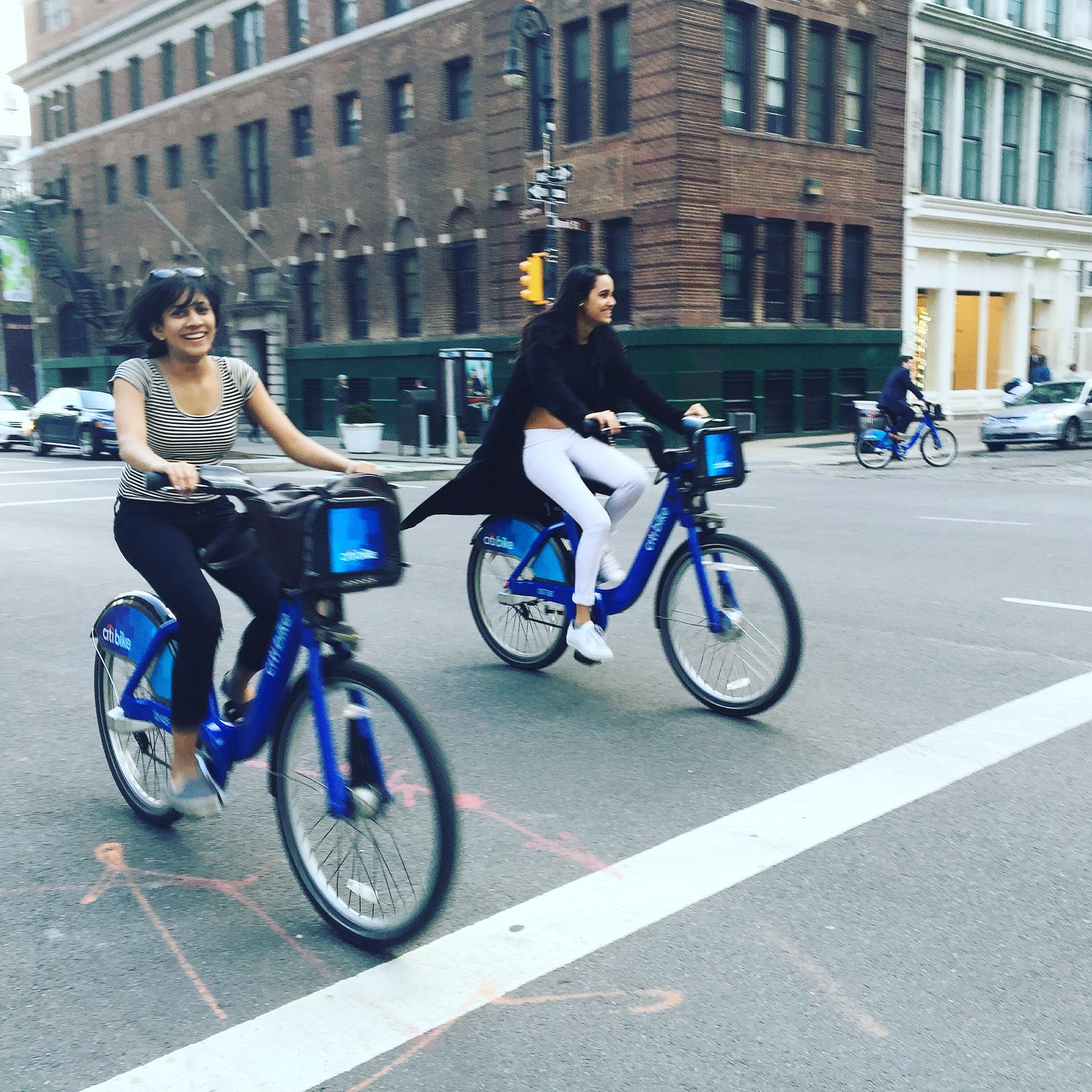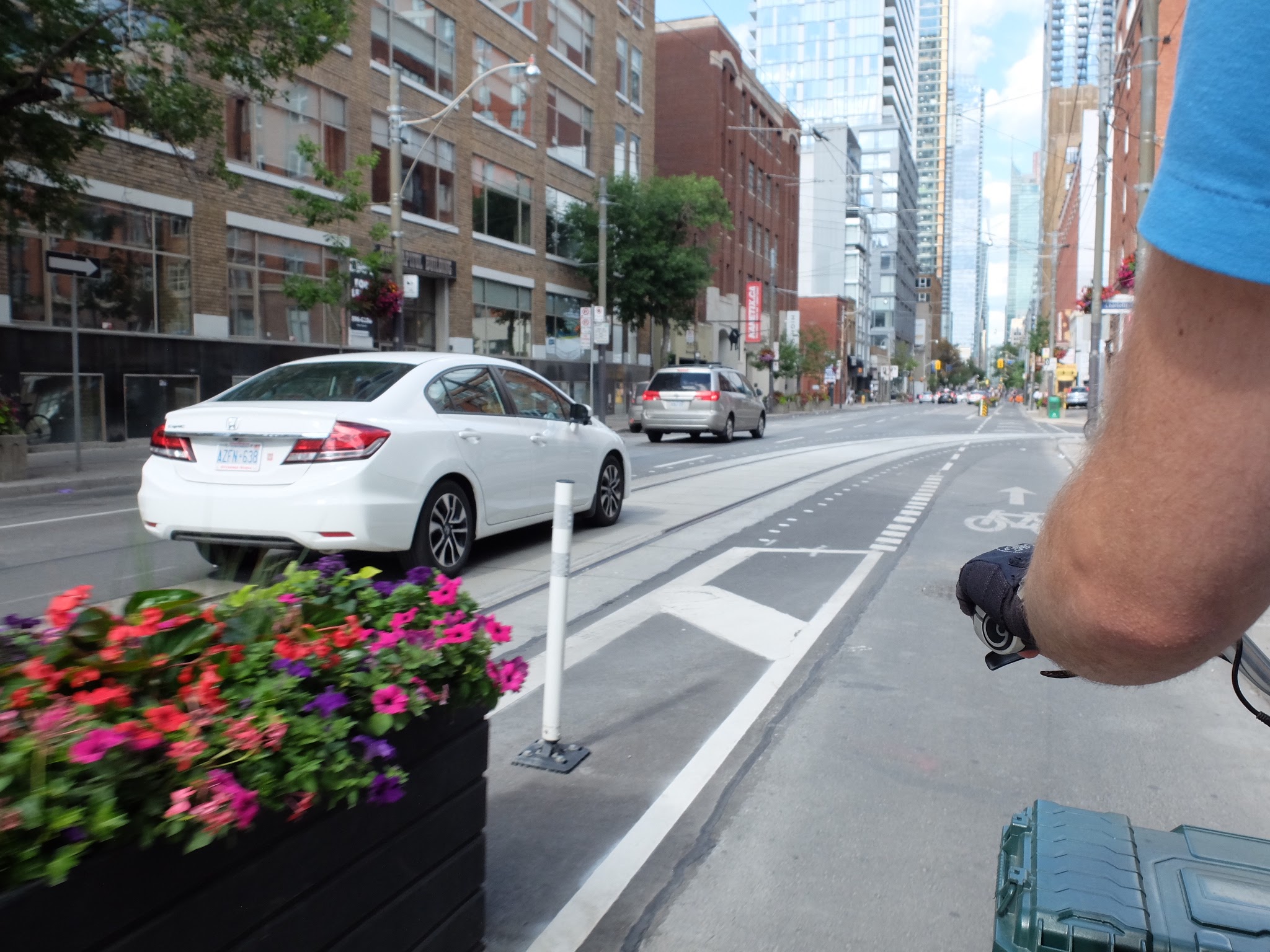It's time to put an end to bikeway "band-aids"
 We are finally moving in the right direction for bicycle urbanism in the United States.
We are finally moving in the right direction for bicycle urbanism in the United States.
At last, more and more cities are realizing that what has been best practice in street design for years elsewhere, is the logical thing to do in this country as well.
Separated lanes used to be seemingly out of reach - the long-term goal of the standard white-strip of paint and sharrows that were acceptable in the interim, or otherwise deemed “too risky” by business-owners unaware of the norm in highly attractive and happy cities in Europe.
New York City paved the way and showed everyone what was possible when you took bold steps in reclaiming streets (read: public space) for the majority of people using them thereby increasing ridership and encouraging other cities to act for the sake of its citizens. With this and the expansion of bike share systems here and across the country, you can’t help but be hopeful for the future of livable cities.

I was appalled then when I recently learned of two “innovations” in the world of bicycle infrastructure: “crossbikes” and “pocket bike lanes”.
This might not be a popular opinion, but calling these a "bikeway innovation" is just plain wrong.
Coming from Portland, I’m no stranger to constructive criticism towards the bicycle capital of the US (and suggestions for improvement). It was in fact this sense of stagnation that left me longing for New York City’s bold actions in separated bike lanes which Portland somehow sorely lacked. With the rollout of their new bike share system this year and prioritization of protected bike lanes (wherever regular bike lanes are proposed), I was excited that they were finally moving beyond their comfortable title - and then this happened.
Rather than saving their money and applying it towards a larger project - like traffic calming bulb-outs or a paint-based greenbox or (gasp!) a protected lane - they do this: simply extending the crosswalk with green paint to add more visibility to what is essentially a low-traffic neighborhood street to begin with.
Is this going to increase visibility? Yeah, maybe. Both regular and separated bike lanes often already extend across the street with their preferred shade of green or blue to increase awareness. I'd like to see the results of whatever post-installation studies they're hopefully doing but, quite frankly, I don't see why this was even thought of in the first place. If the issue is that people crossing this busy street by bike need more visibility, why not just add a stop sign to the intersecting street?

As for so-called “pocket bike lanes”, these have been around for some time, haven't they? Regular bike lanes to the right of traffic will often move to the middle, crossing paths with (and therefore avoiding) the right-turning lane if one exists (a very imperfect system to be sure, but an existing one nonetheless). Apparently, rather than doing it right the first time by putting in a protected bike lane, it’s like a pre-paint treatment in the intersection area only ahead of any other presumed larger project.
You may as well just call these “disconnected bike lanes” or “fractured bike lanes” if you want to be more accurate. The result is being squeezed into an uncomfortable position between two eager lanes of traffic, something an “interested but concerned” person - or, most potential bike riders - would never suggest doing.
More to the point, neither of these so-called "bike innovation" tactics are A.) actually new nor B.) anywhere near good enough for the majority of people who are or could be riding bikes. And when I talk about people on bikes I'm talking about all people - whether young children riding alone, a mom and a cargo bike full of children, a dad and his toddler on the back rack, a young woman heading to work, or an elderly man going grocery shopping. These are the kinds of people we're supposed to be catering to, not the "strong and fearless" who could care less whether they have a separated lane or not.
Innovation for the sake of innovation is not worth the time when we already know what works.
We know that doing more to attract people to ride bikes is better for all of us. It creates happier, healthier people, less polluted cities, safer streets and more connected neighborhoods - all of which benefit the entire community, not just the people riding bikes.

At a time when deaths by car are on the rise, we need to stop taking incremental steps toward some semblance of dignity for people who ride bikes and get on with it already.
According to Fortune, “even though the number of cyclists injured in traffic collisions dropped 10 percent to 45,000 people in 2015, more of those involved fatalities. Cyclist deaths increased 12.2 percent to 818 people last year, the highest level since 1995.” Because of this increase, the DOT is asking for insight from nonprofits and other centers that may hold the key to this crisis.
We don’t need data; we need design, and we already know what that looks like.

I’m just going to skip to the end here: we know what saves lives. We know that in places where separated bicycle lanes are the norm, less people die - whether walking, biking, or driving. We know that more people on bikes means even more people on bikes. And we know that when there are more people on bikes, cultural norms will demand that we have more awareness and respect for people on bikes, creating the behavioral change needed to continue the cycle.
When we know what works, it’s criminal not to enact the best solution to safety, health, and happiness in our cities. Wasting time and money on these half-hearted measures is only fooling ourselves and delaying the ultimate outcome we should all be striving for: human scale cities that are dignified for all people, however they choose to get around.
No more excuses. No more band-aids. The time to act is now.
(If you're in the NYC area, I'll see you next week at this Transportation Alternatives event, and in the meantime you can sign this petition for New York's streets specifically.)